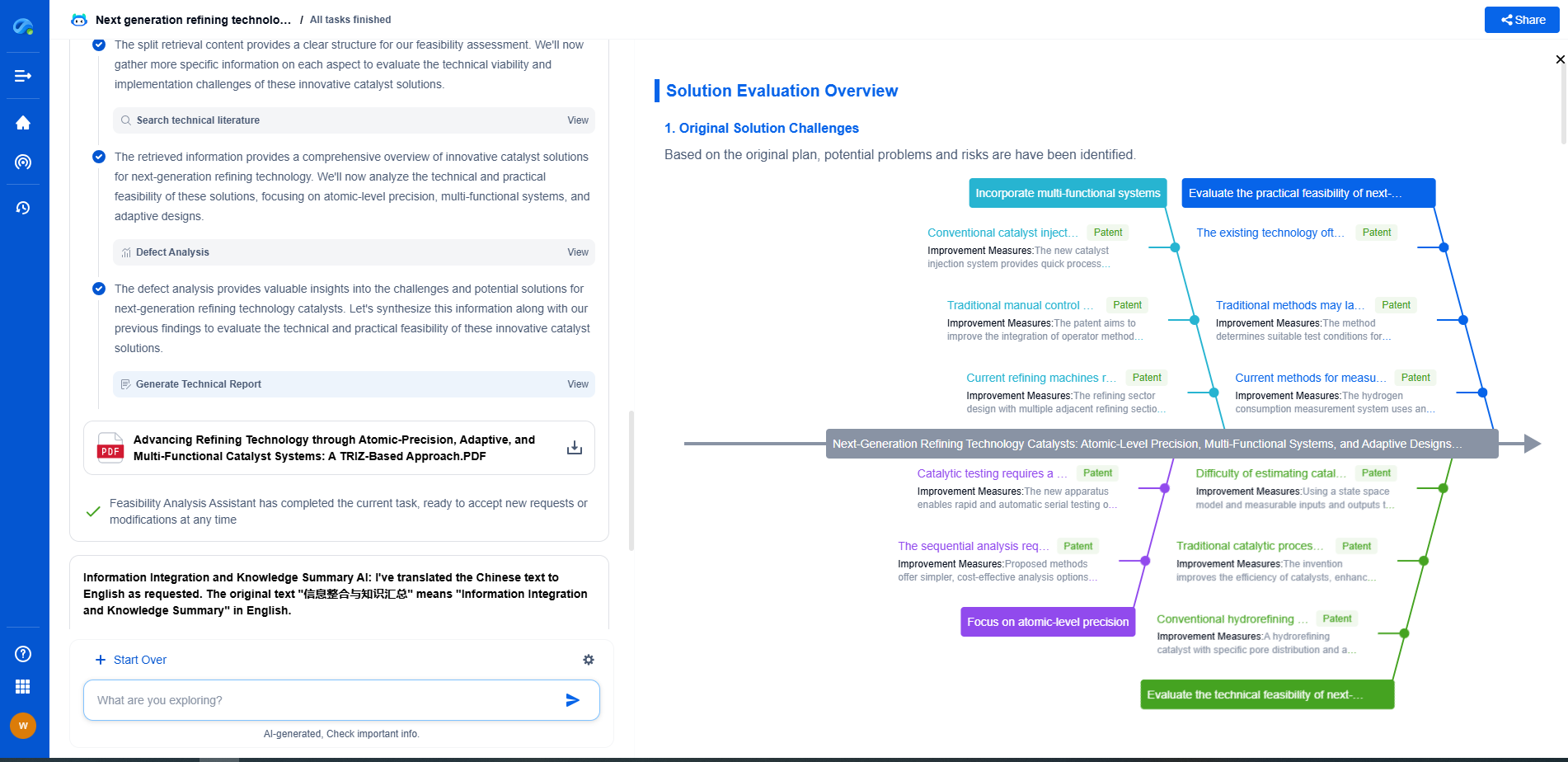Surgical Robot Errors: Who is Liable? (Surgeon vs. Manufacturer)
JUN 26, 2025 |
The advent of surgical robots has revolutionized the field of medicine, offering unprecedented precision and control during intricate procedures. However, like any technology, these advanced systems are not immune to errors. When a surgical robot malfunctions, causing harm to a patient, the question of liability arises: Is it the surgeon or the manufacturer who should be held accountable? This article delves into the complexities surrounding surgical robot errors, exploring the responsibilities of both parties and the legal implications involved.
Understanding Surgical Robots
Surgical robots are highly sophisticated machines designed to assist surgeons in performing complex operations with greater precision. These systems are often comprised of a console, which the surgeon controls, and robotic arms that carry out the actual surgical tasks. The technology aims to enhance the surgeon's capabilities, reduce human error, and improve patient outcomes. However, despite their advanced design, errors can still occur, raising important questions about responsibility.
Types of Surgical Robot Errors
Surgical robot errors can be classified into several categories, each with distinct implications for liability:
1. **Mechanical Failures**: These involve defects or malfunctions in the robotic hardware, such as issues with the robotic arms or instruments.
2. **Software Errors**: Problems with the robot’s software, including glitches, bugs, or outdated programming, can lead to operational errors.
3. **Human Errors**: Mistakes made by the surgical team during the operation, such as incorrect use of the robot or poor decision-making.
Surgeon's Responsibility
Surgeons are responsible for the overall management of the surgical procedure, even when utilizing robotic assistance. Their responsibilities include:
- **Preoperative Assessment**: Ensuring the appropriateness of robotic surgery for the patient’s condition.
- **Skill and Training**: Maintaining proficiency in using surgical robots through adequate training and ongoing education.
- **Supervision and Decision-Making**: Making critical decisions and overseeing the robot’s operation during surgery.
In the event of an error, if it is determined that the surgeon failed in their duties, such as lacking adequate training or making a negligent decision, they may be held liable for the resulting harm.
Manufacturer's Responsibility
Manufacturers of surgical robots are obligated to ensure that their products are safe, reliable, and function as intended. Their responsibilities include:
- **Design and Manufacturing**: Creating robots that meet high safety and performance standards.
- **Testing and Quality Control**: Conducting rigorous testing to identify and rectify potential defects.
- **User Training and Support**: Providing comprehensive training and support to ensure surgeons can effectively and safely operate the robots.
If an error occurs due to a defect in the robot's design or manufacturing, or if inadequate instructions or support were provided, the manufacturer could be held liable.
Legal Implications and Challenges
Determining liability in cases of surgical robot errors can be legally challenging. Several factors must be considered:
- **Proving Negligence or Defect**: Establishing whether the error was due to surgeon negligence or a defect in the robot.
- **Complexity of Technology**: The advanced nature of robotic systems can complicate investigations and legal proceedings.
- **Shared Responsibility**: In some cases, both the surgeon’s actions and the manufacturer’s shortcomings may contribute to the error, leading to shared liability.
Conclusion
The question of liability in surgical robot errors is multifaceted, requiring careful consideration of both the surgeon's and the manufacturer's roles. As surgical robots continue to evolve, clear guidelines and regulations are essential to ensure patient safety and address liability issues effectively. Balancing innovation with accountability will be crucial in navigating the complexities of robotic-assisted surgery, ultimately fostering trust in this transformative technology.
Ready to Redefine Your Robotics R&D Workflow?
Whether you're designing next-generation robotic arms, optimizing manipulator kinematics, or mining patent data for innovation insights, Patsnap Eureka, our cutting-edge AI assistant, is built for R&D and IP professionals in high-tech industries, is built to accelerate every step of your journey.
No more getting buried in thousands of documents or wasting time on repetitive technical analysis. Our AI Agent helps R&D and IP teams in high-tech enterprises save hundreds of hours, reduce risk of oversight, and move from concept to prototype faster than ever before.
👉 Experience how AI can revolutionize your robotics innovation cycle. Explore Patsnap Eureka today and see the difference.
- R&D
- Intellectual Property
- Life Sciences
- Materials
- Tech Scout
- Unparalleled Data Quality
- Higher Quality Content
- 60% Fewer Hallucinations
Browse by: Latest US Patents, China's latest patents, Technical Efficacy Thesaurus, Application Domain, Technology Topic, Popular Technical Reports.
© 2025 PatSnap. All rights reserved.Legal|Privacy policy|Modern Slavery Act Transparency Statement|Sitemap|About US| Contact US: help@patsnap.com

